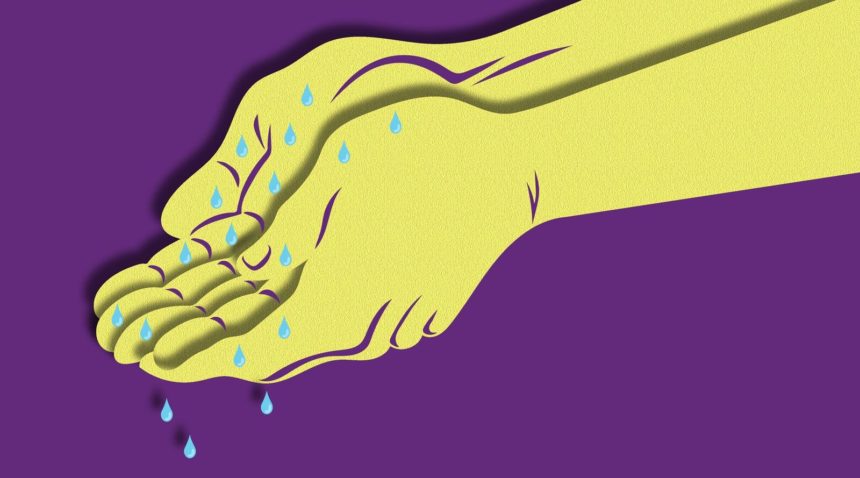Sweating is a normal bodily function when your body is hot and needs to cool down. But for some people, sweating can happen unrelated to heat—resulting in heavy sweat under the arms, on the hands or even on the bottom of the feet, all of which can disrupt daily life.
This condition, called hyperhidrosis, affects about 15.3 million Americans, many of whom have tried prescription antiperspirants, medications and Botox to stop the sweat to no avail. At this point, a surgery called a sympathectomy can be performed.
The cause of hyperhidrosis isn’t known, though an overdrive response of the sympathetic chain, a nerve system along the outside of your spine responsible for the fight-or-flight response, is thought to be the culprit, says Albert S. Y. Chang, MD, a thoracic surgeon at UNC REX Healthcare.
By cutting the nerve, surgeons can stop the sweating. “Surgery is probably the most definitive way to treat people with hyperhidrosis, but there are other treatments people will have to go through before they can get a sympathectomy,” he says. “Typically, people will see a dermatologist for these other treatments before being referred to a surgeon.”
What Happens During a Sympathectomy
For the procedure, one or two small incisions about the size of a pencil are made in a person’s chest. One lung is then temporarily collapsed so the surgeon can move it to reach the sympathetic nerve. A small camera is inserted into the chest for visualization of the sympathetic chain, which is then cut, clipped or both depending on the area and extent of the sweating.
“You cut the nerve at different levels of the spine for different locations of sweating,” Dr. Chang says. “For example, typically if someone is sweating in their hands, we’ll cut it at the second and third rib level. If the sweating is more in the underarm region, you can do the third and fourth levels, and if it’s both, you can do the second through fourth levels.”
The lung will then be reinflated, and the surgeon will repeat the steps on the other side.
“The way I do it, it’s an outpatient procedure, and people go home the same day,” Dr. Chang says.
People who typically get a sympathectomy are younger, but Dr. Chang says the procedure can be performed in people who are older, too. That said, because the procedure requires anesthesia and collapsing each lung, candidates must be in good overall health and be able to tolerate using only one lung for a short time.
About 10 percent of people who get a sympathectomy might experience compensatory sweating, in which people will have excessive sweating in other parts of their body. It’s a result Dr. Chang says can be bad enough that some people wish they hadn’t had the procedure.
“But the vast majority of people are very happy, especially people who have had excessive sweating in their hands or under the arms,” Dr. Chang says. “After surgery, they can shake people’s hands and don’t have to worry about changing their clothes all the time.”
Struggling with excessive sweating? Talk to your primary care doctor or find a doctor near you.

